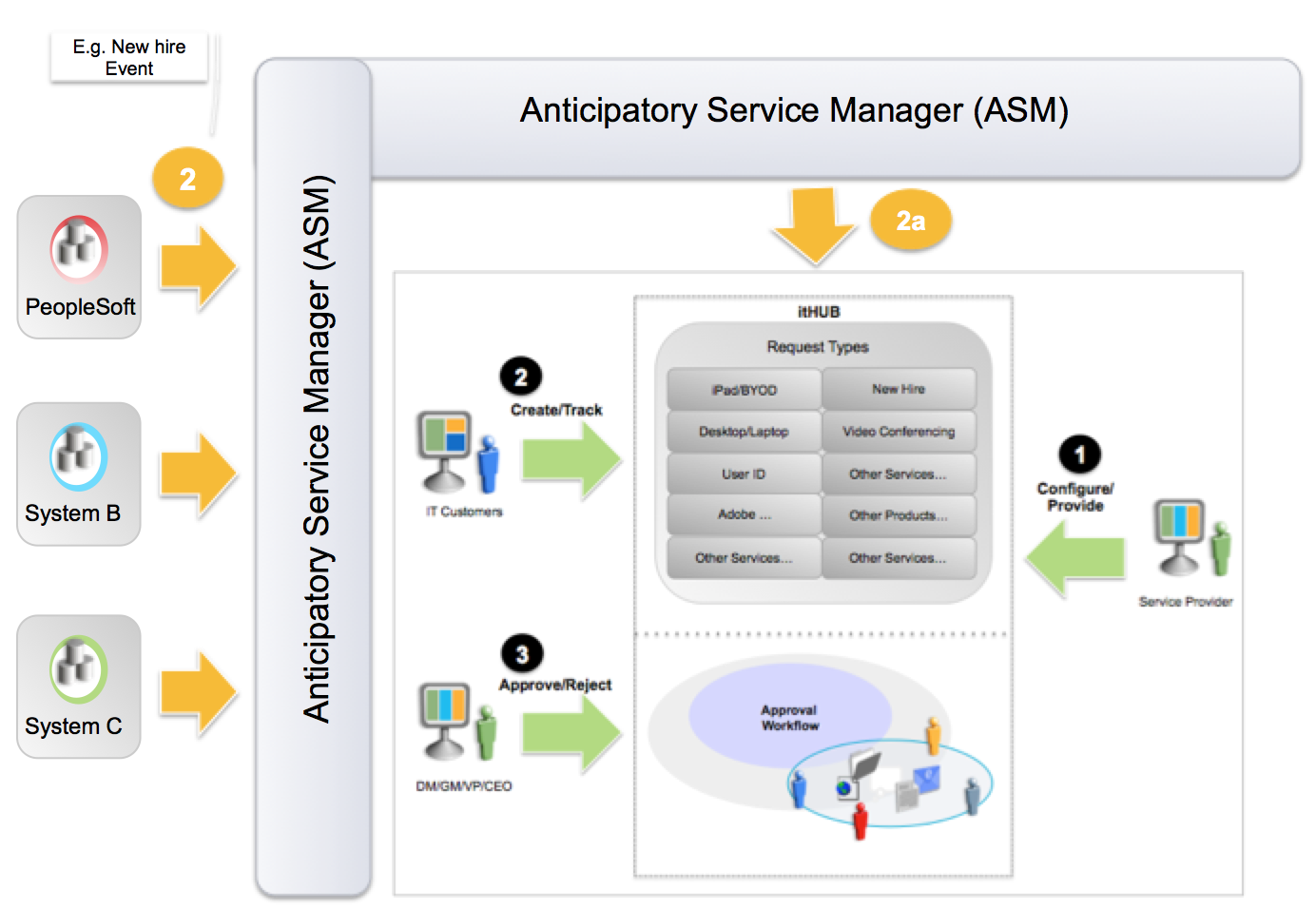Continuing from where we left off in Part 5, lets start exploring the configuration and administration aspects of itHUB a little more in this post.
C. Anticipatory Service Models
By understanding the customer more and more, itHUB can evolve from being an interactive model for providing products and services to anticipatory model for offering products and services.

The Anticipatory Service Manager (ASM) component could be built using a combination of the event-driven architecture model and the prediction API described in the previous section. In the event-driven model, ASM will look for a predetermined set of events such as the New Hire event from PeopleSoft. Upon receiving the event, ASM will create the appropriate requests for the new hire. Some of the requests that can be submitted for a new hire include desktop/laptop, smart phone, any business unit specific applications etc.
V. CONCLUSION
This article, distributed across 6 posts, discussed several techniques with which IT departments could transform from being a reactive informational IT shop to a more dynamic anticipatory service model where the IT department proactively caters to the IT needs of an organization. The first transformation from the more traditional informational model is to setup an online storefront – the itHUB. itHUB is an implementation of the interactive model where customers interact with the system to submit, track, and approve/reject requests and service providers offer products and services through the system by administering request types. To create and sustain the network effect, this article suggested the inclusion of wiki/blog, reviews & ratings, and Q&A features. The article also suggested some ways for implementing recommendation of products and services and sentiment analysis to improve the understanding of the IT customer. Finally, the ASM model was introduced to facilitate the need for making IT departments more agile and proactive.
